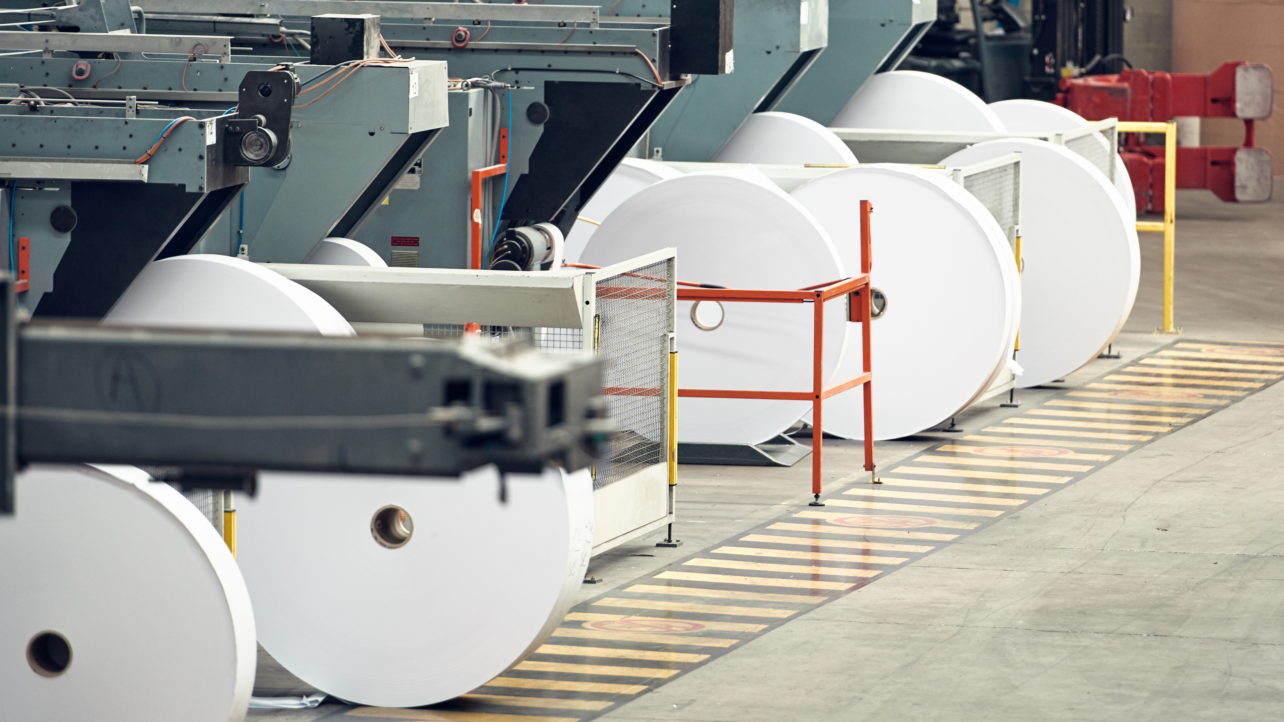Prescriptive
Optimizing production settings
Operations teams often have a hunch about where an issue originates, which operating settings are ideal under certain conditions, and what to do if something goes wrong. The problem is that most of the time, operations teams are working off hunches instead of data. This is because they don’t have access to the data they need to get a full understanding of production.
Leading the decision-making process with data is vital if operations teams are going to change old habits and continuously improve processes. However, understanding the nuanced relationships between manufacturing inputs and outputs is incomprehensibly complex. Shedding light on these input-output associations is simply not possible without tools like AI.
AI can perform analytical tasks faster (and more accurately) than humans. Current estimates state that AI can compute 200 quadrillion calculations per second, making it possible to crunch through massive amounts of data in very little time. These gains in time and accuracy mean your teams can put valuable findings into action faster than ever (even in real time!), while also having confidence that the process changes they’re making are proven to drive results and are safe to implement.
Using Braincube’s CrossRank AI, operations teams can identify the exact settings needed to reach optimal operating outcomes. The AI analyzes thousands of variables simultaneously and provides prescriptive settings for single or multi-objective rules that are directly applicable within the factory.
The important thing to note is that CrossRank AI only computes historical data, not projections or assumptions. Since the results generated by CrossRank AI have been achieved previously, operations teams can be confident that these parameters can be replicated. Your teams can put these prescribed parameters into place and know they are making changes that will drive them toward the desired objectives.
One of our building materials customers leveraged CrossRankAI to optimize their roofing production costs. Their goal was to reduce material costs while keeping their strict high-quality specs. By analyzing the relationships between variables, the AI was able to recommend recipe adjustments that resulted in almost immediate cost savings of $200,000.
Predictive
Predict specific outcomes to drive KPIs and reduce inefficiencies
Oftentimes, operations teams are working towards production KPIs on a daily basis but getting feedback days (or even a week) after production takes place. This delayed data loop makes it difficult for operations teams to make improvements because they have no visibility into what’s taking place on the shop floor.
AI-generated predictions can help operations teams get clear insights into knowing if what’s happening right now aligns with what they expect to happen. This makes it possible for operations teams to look for drifts, unexpected results, or issues in real-time instead of troubleshooting what happened days later.
For instance, operations teams can use Braincube’s Advanced Analysis App to select an objective (such as product quality or energy consumption), uncover the variables impacting it through AI analysis, and then build a predictive model based on Multiple Linear Regression (MLR).
The predictive model provides operations teams with early insights into expected production results based on current input variables. This allows the team to take corrective actions early if the predicted outcome is unfavorable, optimize resource allocation, and ensure that the current settings will drive the required output.
For example, one of our customers knew that energy was the largest component of their production costs. They used Braincube AI to get prescriptive answers about which variables impacted energy consumption the most.
Next, process experts built a predictive model—in just a few clicks!—based on these variables using Braincube’s MLR (multiple linear regression) predictive analytics tool. These energy predictions were tracked in a dashboard alongside current running conditions, allowing the operations team to be alerted to potential energy consumption drifts before they occurred. This enabled them to take corrective actions early, reduce troubleshooting time, and measure the gains of their energy reduction initiatives accurately.
Predictive analytics use case
0%
increase in production volume
0 hours
saved by quality team every month
They dove into deeper data analysis whenever there was a gap between actual consumption and expected consumption. In doing so, they uncovered new optimizations that could then be implemented for even greater benefits.
Another Braincube customer used the same predictive modeling tool to predict the quality outcome of their products. By feeding the model with live production data, operations teams gained early insights into each unique product’s quality conditions.
The company’s operations team knew that the majority of products—roughly 70%—were passing through unnecessary upstream quality control checks. Essentially, if specific upstream conditions were met, the product would always pass the first quality control check. This meant that they could drastically reduce the number of products going through quality control checks.
Operations leaders opted to skip quality checks on products that met the correct production conditions upstream, validated by the model predicting each plate’s quality condition. Bypassing this redundant quality control check for qualified products resulted in a 65% decrease in quality control volume, saving the quality team 80 hours each month.
Prescriptive
Continuously improve with up-to-date AI recommendations
Let’s say your data science teams find an optimization opportunity during their analyses. This improvement is then relayed to operations teams and put into place. But what happens after that? At most manufacturing companies, that’s where the continuous improvement cycle ends: a change is made, it works, and teams move on to other challenges.
There are often no follow-up analyses to examine if refined optimizations can be made based on new production data coming in. Or, if there are additional analyses, they must pass back through the hands of data scientists before making their way to operations for implementation. In other words, if production is truly being continuously improved, it is a time-consuming process limited to the capacity of data science teams.
Since Braincube’s Digital Twins automatically handle cleaning and contextualizing all data sources, operations teams instantly have access to the latest data coming in from production after a change is made. Running this data through additional AI analyses can reveal further optimizations. In other words, process engineers and SMEs can use AI to pinpoint the best parameters under current conditions instead of using previous, outdated data.
Updated data can also be pulled into visualization tools, like Braincube Studio or the Charts App, so other operations team members can clearly understand the impact of these continuous improvement efforts. For example, as new data is generated after any initial process changes, operations teams can compare charts of new data to the baseline (“pre-improvement”) data.
Visualization tools help operations teams track progress and validate their continuous improvement efforts. These tools also free up time for data science teams so they can do more high-value tasks.
Predictive
Improved maintenance scheduling
Predictive maintenance leverages data analysis tools and techniques to detect asset breakdowns before they result in failure. Under this strategy, companies can better control their maintenance by anticipating, scheduling, and influencing operational problems related to machine health. In short, your maintenance strategy is informed by performance data from your production lines, not a predetermined schedule.
Predictive maintenance aims to anticipate breakdowns before they occur. In turn, you can reduce unplanned downtime, optimize resources, and keep production moving forward. Working towards strong indicators of failure or maintenance needs can have significant payoffs. Those manufacturers who do it well can have increased profitability by 4 to 10 percent due to higher availability and a more efficient workforce.
Braincube’s predictive analytics allows operations teams to enhance their predictive maintenance strategies by providing early detection of potential breakdowns. By building a predictive model of previous machine breakdowns, operations can proactively identify when a machine might fail. This enables the operations team to proactively schedule maintenance before critical situations occur, thereby reducing unplanned downtimes.
Conclusion
Whether teams want prescriptive set points that optimize key processes or predictive models that improve production outcomes, AI grants operations teams with advanced capabilities. It enables operations teams to anticipate issues, optimize processes, and make data-driven decisions proactively rather than reactively.
In all these examples, Braincube’s AI goes beyond traditional analytics by providing forward-looking insights. The key is the AI’s ability to quickly identify critical variables, build accurate predictive models, and present the information in an actionable format for operations teams. Providing these AI-forward capabilities to operations teams via ready-to-use applications, Braincube delivers safe and verified outcomes that are quick to implement and drive rapid ROI.





